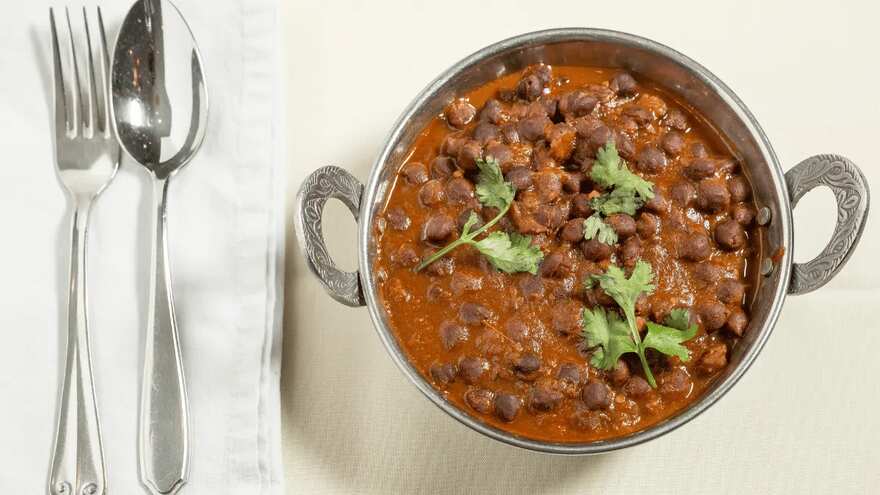Indian cuisine is a world of culinary wonder, a tapestry woven with the richest of flavors and the most diverse array of dishes. Yet, within this vibrant mosaic, many traditional Indian recipes carry the weight of calories, saturated fats, and refined carbohydrates that might not harmonize with a health-conscious lifestyle. However, here's the heartening revelation: the essence of Indian gastronomy, with its aromatic spices and tantalizing tastes, can still be savored while embracing a more nourishing path.
In this gastronomic journey, we embark on a quest to reinvigorate seven classic Indian recipes, breathing new life into them with wholesome and healthful substitutions. This transformation doesn't compromise on the deliciousness that Indian cooking is renowned for but rather elevates these dishes to embrace a healthier, more balanced culinary narrative.

Our mission is to explore these traditional gems, cherished across generations, and unlock the potential to make them not just delectable but also nutritious. The journey promises to be a fusion of tradition and modernity, where mindful choices elevate the dining experience without sacrificing the essence of India's culinary heritage. So, join us as we embark on this savory voyage, discovering the art of savoring Indian flavors in a healthier, more vibrant way.
1. Butter Chicken (Murgh Makhani):
Traditional butter chicken is made with a rich, creamy tomato sauce and often contains copious amounts of butter and heavy cream. To make it healthier:
- Use lean cuts of chicken or tofu for a vegetarian option.
- Replace heavy cream with Greek yoghurt or coconut milk for creaminess.
- Use a moderate amount of ghee or olive oil for cooking.
- Opt for whole spices and fresh herbs for flavour instead of excessive salt.
2. Chana Masala:
Chana masala, a popular chickpea curry, can be made healthier with these swaps:
- Use less oil and sauté onions and spices in vegetable broth or water.
- Choose dried chickpeas and soak them overnight instead of canned ones to reduce sodium content.
- Add extra vegetables like spinach, bell peppers, or kale for added nutrients.
- Use homemade or low-sodium canned tomato puree to control salt intake.
3. Vegetable Biryani:
Vegetable biryani is a flavourful rice dish that can be lightened up with these modifications:
- Use brown rice or quinoa instead of white rice for added fibre.
- Reduce the amount of oil or ghee used for cooking.
- Add a variety of colourful vegetables for more vitamins and minerals.
- Use a mix of Greek yoghurt and a small amount of cream for the marinade instead of heavy cream.
4. Aloo Paratha:
Aloo paratha, a stuffed potato flatbread, can be made healthier with these changes:
- Choose whole wheat flour for the dough to increase fibre content.
- Use a minimal amount of ghee or oil for cooking.
- Stuff the paratha with a mixture of mashed potatoes, spinach, and grated carrots for added nutrients.
- Serve with plain yoghurt or cucumber raita instead of butter or ghee for a lighter accompaniment.
5. Samosa:
Samosas, deep-fried pastries filled with spiced potatoes and peas, can be made healthier with these tweaks:
- Bake or air fry the samosas instead of deep-frying to reduce oil consumption.
- Use whole wheat or phyllo dough for a lighter crust.
- Incorporate a mix of vegetables like sweet potatoes, carrots, and peas for added nutrients.
- Serve with a tangy tamarind chutney or mint yoghurt dip instead of heavy sauces.
6. Palak Paneer:
Palak paneer, a creamy spinach and cottage cheese curry, can be made more nutritious with these substitutions:
- Replace paneer with tofu or tempeh for a lower-fat, plant-based alternative.
- Use reduced-fat or skim milk instead of heavy cream for the sauce.
- Add ground flaxseeds or chia seeds for extra fibre and omega-3 fatty acids.
- Steam or blanch the spinach to retain more nutrients before blending it into the sauce.
7. Tandoori Chicken:
Tandoori chicken, marinated and roasted in a clay oven, can be a healthy option with these adjustments:
- Choose skinless chicken pieces to reduce saturated fat content.
- Replace the full-fat yoghurts in the marinade with low-fat or Greek yoghurt.
- Use a spice blend with less salt or make your own with minimal sodium.
- Serve with a side salad or grilled vegetables instead of buttery naan or rice for a lighter meal.
Traditional Indian cuisine can be adapted to fit a healthier lifestyle without sacrificing flavour. By making these simple swaps and mindful choices, you can enjoy the delicious and diverse world of Indian cooking while also supporting your well-being. Remember that moderation is key, and it's essential to listen to your body's hunger and fullness cues to maintain a balanced and nutritious diet.


